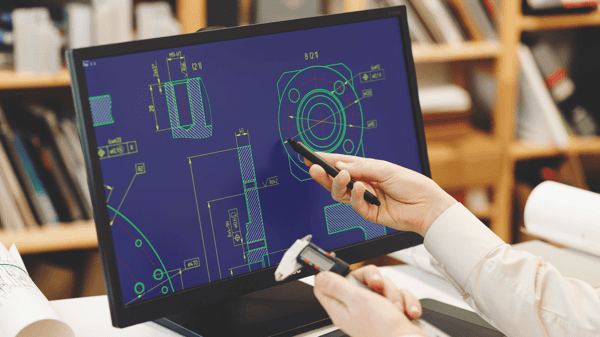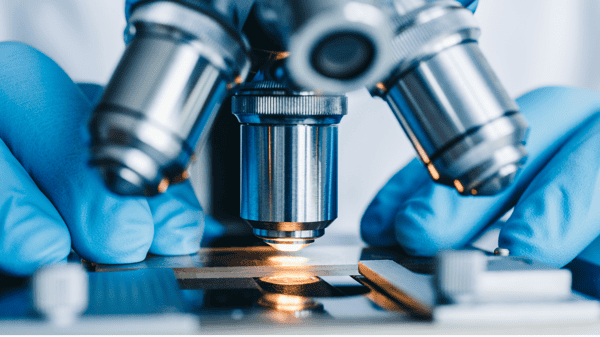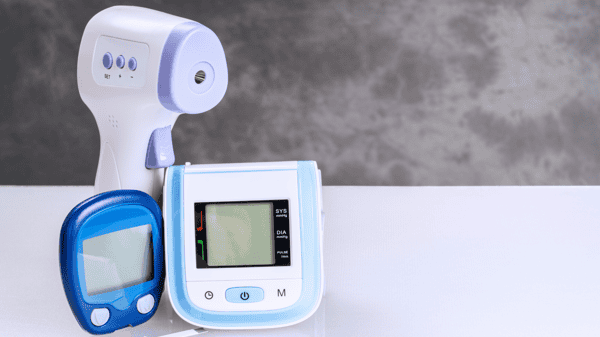Medical device product development brings together biology, engineering, marketing, and quality systems.
The FDA regulates medical devices that are characterized as “finished products intended for human use.” The documentation containing these regulations is 21 CRF 820, titled Quality System Regulation. A quality system is the whole of the implemented concepts, methods, tools, and standards that a business uses in order to achieve its goals that are relevant to quality. Because medical devices can affect human health and safety, the government regulates the quality systems that companies use in order to ensure that the fewest possible risks are present.
🔬 Related: Product Development in Life Science
Quality systems are important to consider when a product is being manufactured and as early as the discovery phase. Thus, when discussing medical device product development we are also discussing medical device regulation. There are 5 general phases of medical device product development:
🔬 Learn about: Quality Assurance and Quality Control for Biotech and Medtech Startups

After coming up with an initial idea for a medical device, this is the first phase of product development. Discovery involves market research, competitive analysis, and financial review, which informs the concept for the device. A company that wishes to produce a successful product must first understand whether the product is needed in the market, often by interviewing potential customers. Frequently, a product idea will be a new solution for a known problem that already has other solutions on the market. Therefore, during the discovery phase, the company will analyze these other solutions in order to determine how competitive they are. The competitiveness of a solution does not always come down to its efficacy. The product’s cost, ease of use, and how much customers like their current solution also matter. Based on the competitive analysis and market research, a financial analysis will determine whether the cost of creating the product is likely to be worth it.
Additionally, information gathered from customer interviews will be used throughout the design process. These “user needs” are the “why” of the design, and must be maintained throughout development.
The concept phase is when market data and technology meet, to see if the product that the market wants is feasible from an engineering standpoint. Proof of concept is achieved via experimentation, in which experiments are designed to predict the product’s success in the target use case. The exact conditions of use for a medical device can’t be recreated in the lab, but approximating some of the known factors a company can determine if a concept is likely to be successful.
If the company decides to move forward with the concept, a quality system is necessary to follow 21 CFR 820, even at this early stage of development. The regulations require stringent record keeping.
🔬 Read about: The Importance of Market Research in Biotech and Medtech Startups

After the concept is determined to be sound, more testing must be done in order to ensure that the proposed medical device is safe and effective, also known as validation and verification. This testing occurs in a laboratory using a prototype. A prototype is an initial design for the proposed device that can be tested in the lab to see if it works the way it should. Everything from the toxicity of materials used to the mechanical strength of the device to withstand the conditions of the use case must be considered. At the same time, the prototype is also tested for efficacy in as close of an approximation of the use case as possible. This approximation may involve in vivo testing using animal models.
The prototype is likely to undergo many iterations during validation and verification of the design. In order to make sure the customer’s requirements that were gathered during the previous phase are not forgotten, one useful tool is called a design trace matrix. This is part of design control, an essential part of good manufacturing process (GMP) for medical devices. A design trace matrix connects the user’s needs to how they will be validated and verified. This helps to prevent a situation where as the design is iterated upon, it actually gets farther away from what the user actually requires. The user needs are translated into measurable design inputs. Then you must determine how you will verify that the design inputs were actually met.
Because the data collected during research and development will be part of a package submitted to the FDA, an effective quality system is essential at this stage.Traceability is part of this quality system, as is a massive amount of documentation of each and every change made to the prototype.
Once a company has developed their product to the point at which they believe it can safely be used by/for/on people, the FDA must provide its approval for the next steps. Many devices that are substantially equivalent to devices already on the market and are therefore categorized as the least risky (Class I or Class II devices), only require 510(k) premarket notification. This means the FDA must be notified prior to the device being marketed for sale. Some Class I devices are so low-risk they don’t require a premarket submission at all. Class II devices represent higher risk than Class I and therefore usually require 510(k) notification. Devices that represent the highest levels of risk to human health and safety, Class III devices, must go through clinical trials prior to applying for premarket approval (PMA). Some Class II devices that will be submitted via 510(k) also require clinical trials, but this is a small percentage. (There are other pathways for FDA approval but the 510(k) and PMA are the most commonly discussed ones.)
The medical device pathway for initiating clinical trials is known as the Investigational Device Exemption (IDE). This exemption allows devices to be tested in humans before they are approved. The IDE requires that sufficient preclinical data have been collected to demonstrate safety before it will be granted.
Clinical trials for medical devices are generally smaller than those for drugs or biologics, and the purpose of the study is taken into account in the IDE review. The FDA will look mainly at safety for a feasibility study IDE, whereas they will look both at safety and how effective the plan is for analysis in a pivotal study that will provide critical data for the PMA. The basic submission elements for an IDE application include:
For a pivotal IDE, the following are also necessary elements:
Once the IDE application is submitted, the FDA may either approve, disapprove, or approve with conditions. Disapproved trials may not begin until the deficiencies are addressed and submitted to the FDA, who then reviews the new information.
Though clinical trials for medical devices are smaller, they are no less challenging. Once clinical trials are successfully completed and if the data is positive, then a company may progress to the PMA application.
The FDA Center for Devices and Radiological Health’s (CDRH’s) main job is to prevent unsafe medical products from being sold in the U.S. The 510(k) and PMA processes are designed to ensure that only safe devices are on the market. Once all of the required data has been collected pertaining to the proposed product, the company submits the information to CDRH, whether via 510(k) or PMA. For a 510(k) the goal is to show that the product is substantially equivalent to another product that has already been approved by the FDA. For a PMA, the goal is to show the FDA that this new product is safe and effective for the proposed use, and that the quality system is sufficient to keep it that way. The FDA also inspects the manufacturing facility that makes the finished product to make sure that good manufacturing practices (GMP) are being followed.
🔬 Related: 510(k) Premarket Notification for Medical Devices

After receiving the go-ahead from the FDA and selling the device to customers, the job of product development is not yet finished. In fact, product development continues for the entire life of the product. As customers begin to use it they will provide feedback (and possibly complaints), your internal systems will require auditing, and if any significant changes occur additional clearance from the FDA may be needed. Therefore, the quality system must continue to meet federal regulations and provide robust assurance and control to reduce the risk of adverse events connected to the medical device.
Additionally, the FDA keeps records of reports of safety problems from doctors, hospitals, and others who use the medical device. They also conduct inspections of manufacturing facilities to ensure that regulations are being followed throughout the manufacture of the device, not just for approval.
Other helpful articles:
11 Leading Medical Device Companies in 2020
Opportunities and Challenges for Medical Devices in Pandemic Times
Download The Ultimate Guide to Wet Lab Incubators in Southern California, a handbook to assist life science start-ups through the entire decision-making process to find wet lab space.
Download Now